|
|
Expeditions to the Arctic. part 1. |
|
There are many magic lantern slides that depict the polar regions and the
expeditions to the Arctic. It appears very hard to determine which set of slides
was made by a certain manufacturer. Manufacturers such as Theobald & Co, Newton &
Co, Alfred Pumphrey, Barnard & Son, W.C. Hughes, and York & Son made
large sets that consisted of up to 50 slides and probably some of these sets were also released as smaller sets. |
||
| The Arctic Circle. | ||
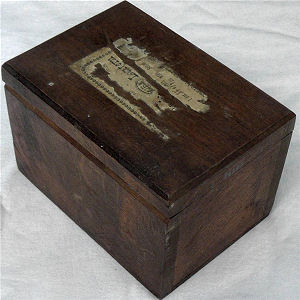 |
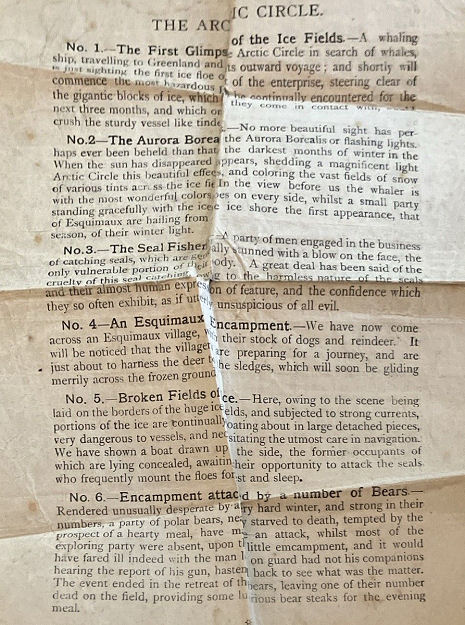 |
|
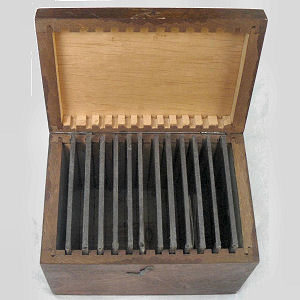 |
||
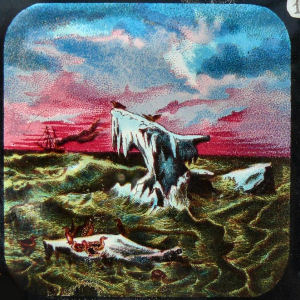 |
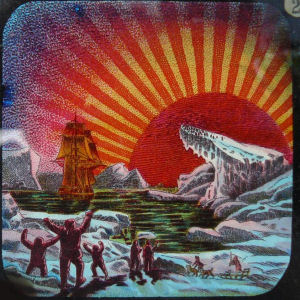 |
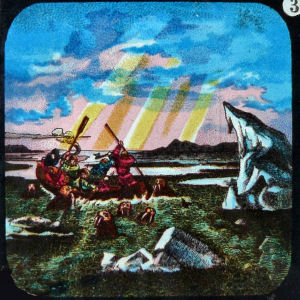 |
| 1. The First Glimpse of the Ice Fields | 2. The Aurora Borealis | 3. The Seal Fishery |
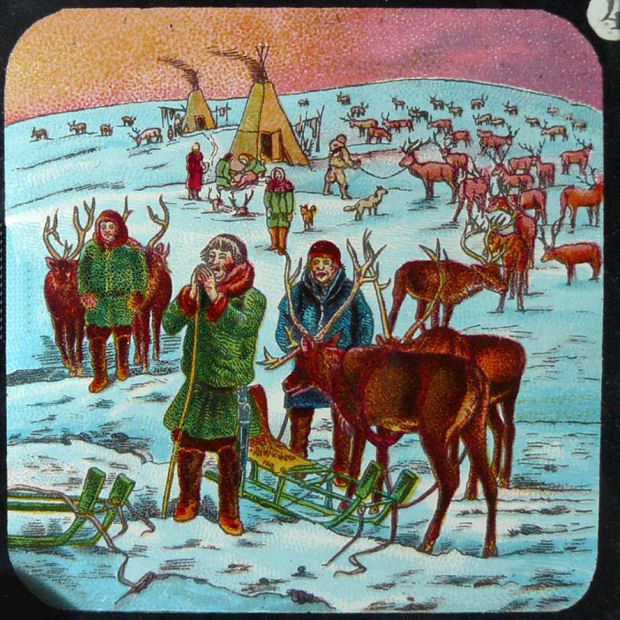 |
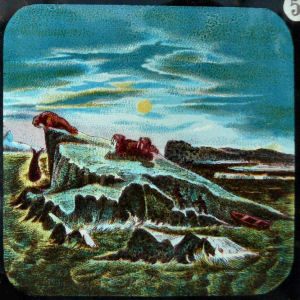 | |
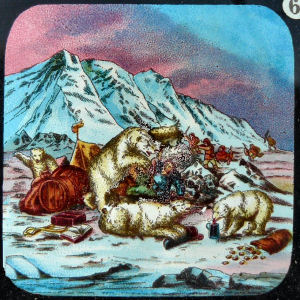 | ||
| 4. An Esquimaux Encampment - 5. Broken Fields of Ice | 6. Encampment attacked by a number of Bears | |
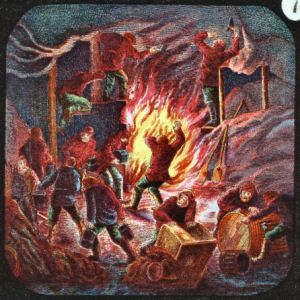 |
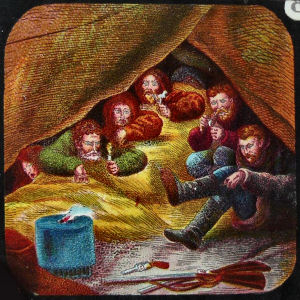 |
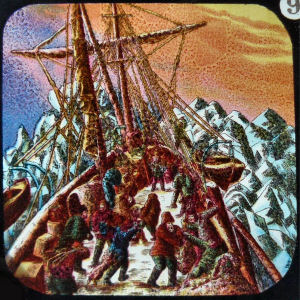 |
| 7. Explosion in the Camp | 8. Inside the tent | 9. A vessel suddenly closed in upon by ice floes |
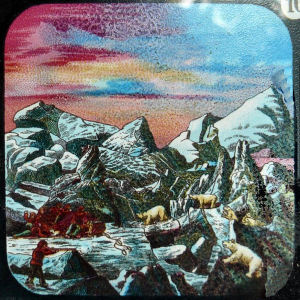 |
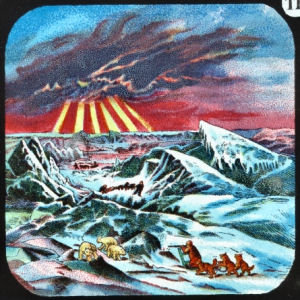 |
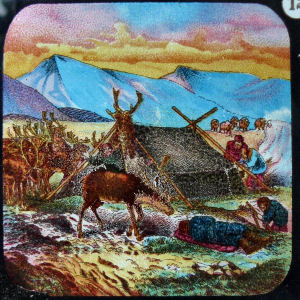 |
| 10. The first day ashore | 11. Exploring the country | 12. We find them in much better quarters |
| This set of
square 3.25" (8.2 cm) magic lantern slides was made by Theobald & Co., England. The McClintock Arctic Expedition. |
||
| Captain Francis Leopold McClintock aboard the steam yacht Fox led the 1857 Arctic Expedition to locate the remains of the earlier doomed Franklin Expedition. After two years of searching McClintock and his men returned with the only written message ever found of the lost explorers. | ||
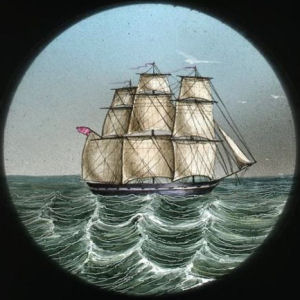 |
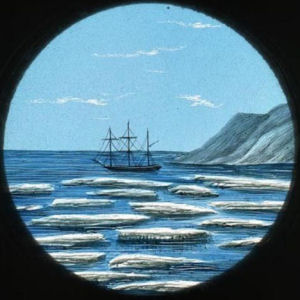 |
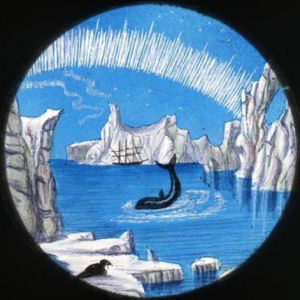 |
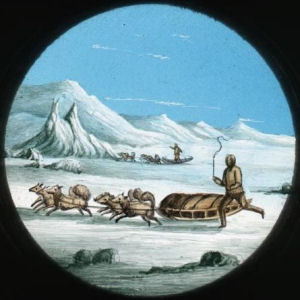 |
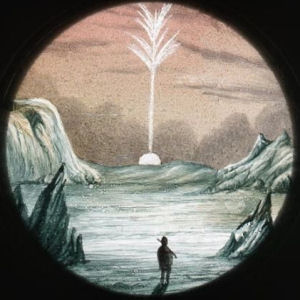 |
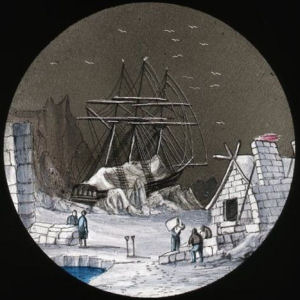 |
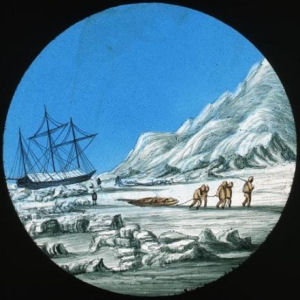 |
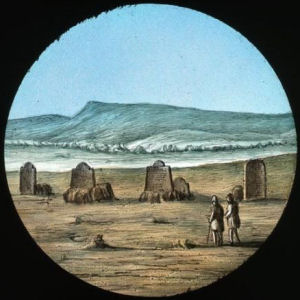 |
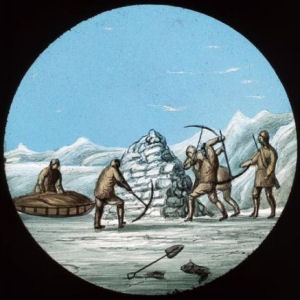 |
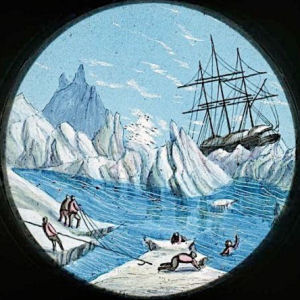 |
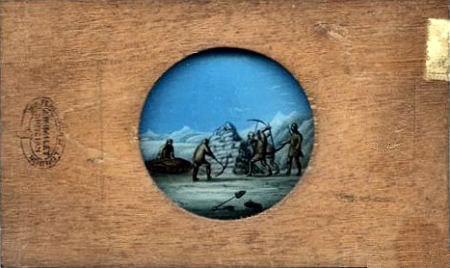 |
|
|
# 40 The Ship # 45 Cape Farewell # 46 Icebergs (with a hand-written notation Aurora Borealis) # 47 Sledging # 48 Sun at Midnight # 53 Winter Quarters # 58 The Graves at Beechey Island # 60 Discovery of a Cairn # 63 Breaking up of the Ice # 65 Departure of Exploring Parties from the Fox |
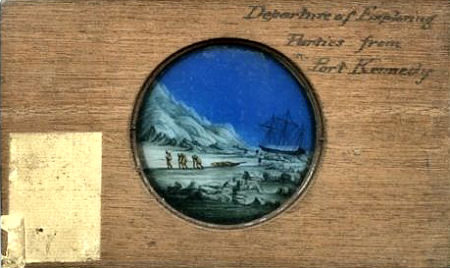 |
|
| Some slides are named in hand-writing on the mount. This one 'Departure of Exploring Parties from Fort Kennedy'. | ||
|
Each 2.75" (7 cm) diameter circular slide is mounted in a 3-7/8 x 6.5" (10 x 16.5 cm) wooden frame. Some slides are stamped 'J.W. Mailey, Optician, London', probably the name of the retailer. |
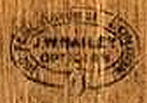 |
|
| The Arctic Magic Lantern Shows of Commander Cheyne. | |
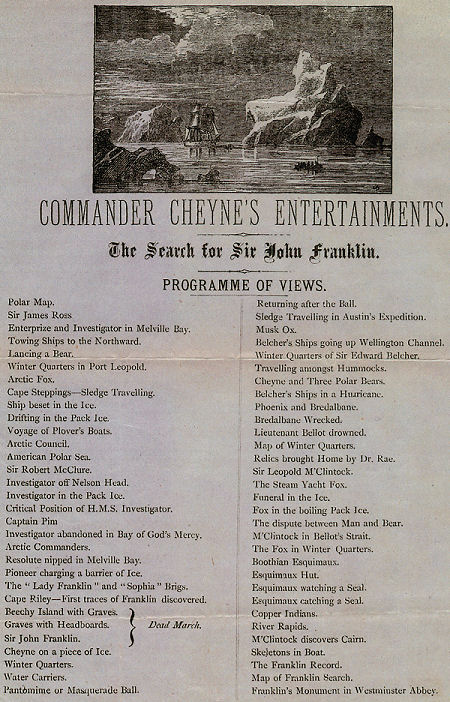 |
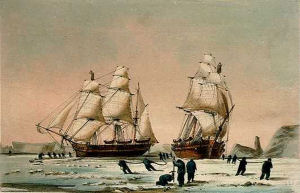 |
|
As a young midshipman Lieutenant John P. Cheyne accompanied
captain J.C. Ross in his search for the Franklin expedition with Enterprise and
Investigator in 1848-49. After his return to London he gained some experience in
amateur theatricals, and took up the relatively new art of photography. He
produced a remarkable series of stereoscope views of the Franklin relics brought
back to England by Sir Leopold McClintock in 1859. After retiring in 1870 he took up the idea of an expedition to the North Pole using specially-equipped balloons. The public, having seen balloons in use in earlier attempts to locate Sir John Franklin, were very receptive to the idea. However, unable to secure any official backing, Cheyne turned to the exhibition circuit. He regularly projected several large series of Magic Lantern slides onto enormous screens in public meeting halls and lecture rooms using the excellent lime light sources in his lanterns. Many of the slides showed scenes in which he had personally taken part. |
|
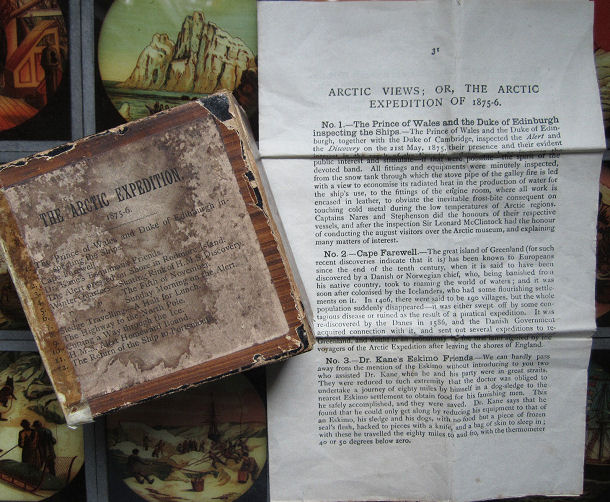 Arctic Vieuws, or The Arctic Expedition of 1875-6. |
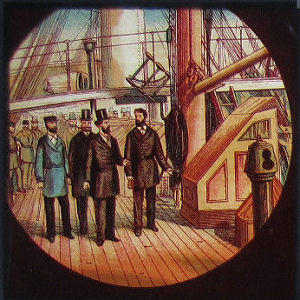 | |
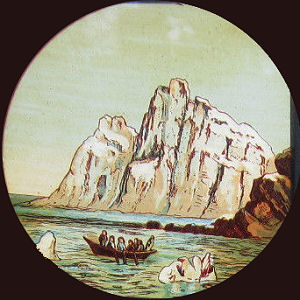 | ||
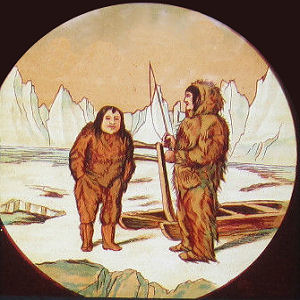 |
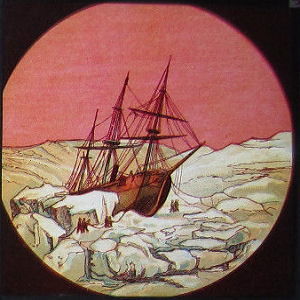 |
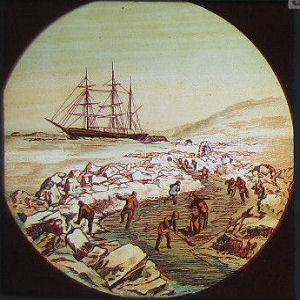 |
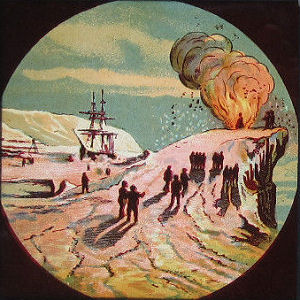 |
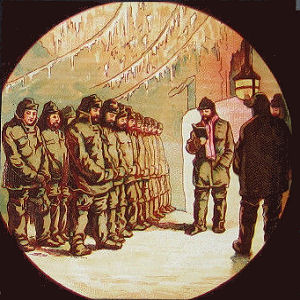 |
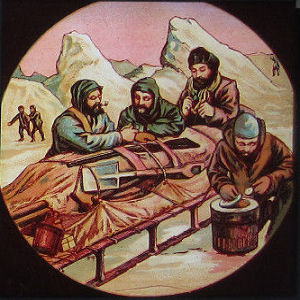 |
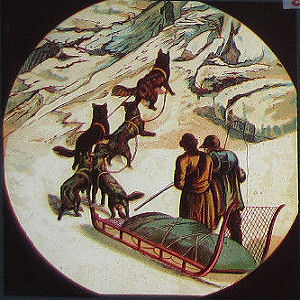 |
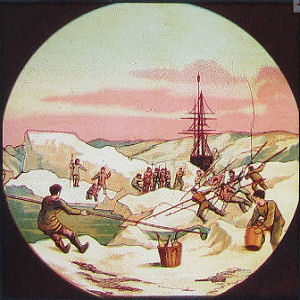 |
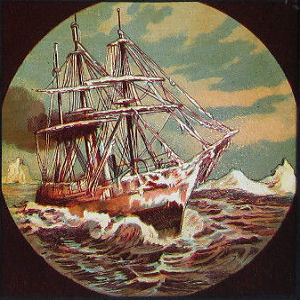 |
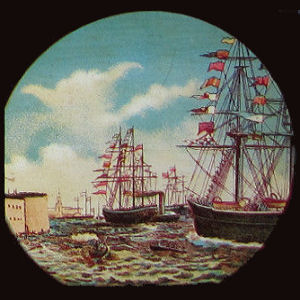 |
Slide listing: 1 The Prince of Wales and the Duke of Edinburgh inspecting the Ships 2 Cape Farewell 3 Dr Kane's Eskimo Friends 4 The Alert pressed on shore in Rodmore Harbour 5 High Street; main road between the 'Alert' and the 'Discovery' 6 The Fifth of November as kept by the crew of the 'Alert' 7 Sunday morning on the 'Alert' 8 Sledge Travelling -- A Halt for Lunch or Dinner 9 Sledge Travelling -- Hauling a Sledge to Cape Rawson 10 Cutting a way through the Ice 11 The 'Alert' Homeward Bound 12 Return of the Ships to Portsmouth Measuring the usual 3 1/4" (8.2 cm) square; made by Theobald & Co. |
|
|
The British Arctic Expedition of 1875-1876, led by
Sir George Strong Nares, was sent by the British Admiralty to attempt to reach
the North Pole via Smith Sound. Two ships, HMS Alert and HMS Discovery
(captained by Henry Frederick Stephenson), sailed from Portsmouth on 29 May
1875. Although the expedition failed to reach the North Pole, the coasts of
Greenland and Ellesmere Island were extensively explored and large amounts of scientific data were collected. |
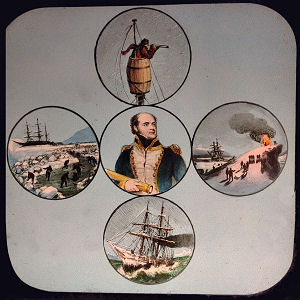 |
|
|
Not sure to which set the slide at the right belongs. Maybe
it's the set from above. |
||
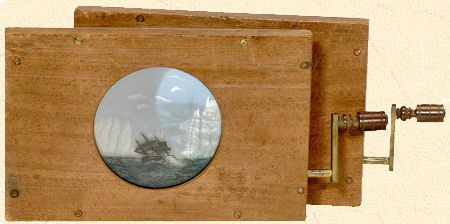 |
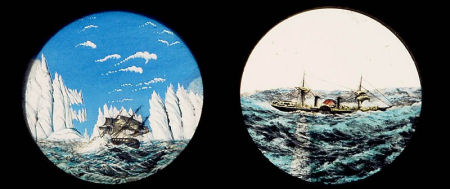 |
|
Two maritime mechanical slides entitled 'Sailing in the
Artic Sea', c. 1880. Wooden framed 4.4 x 7" (11 x 17,5 cm). |
|
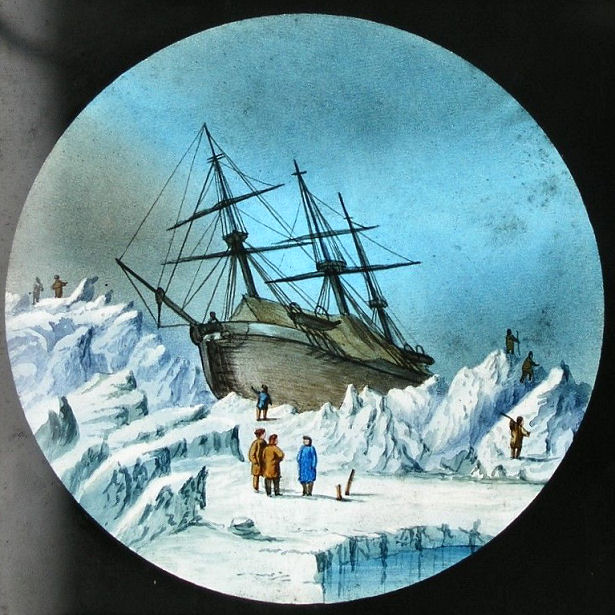 |
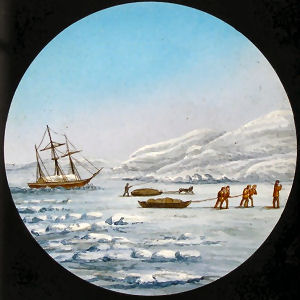 | |
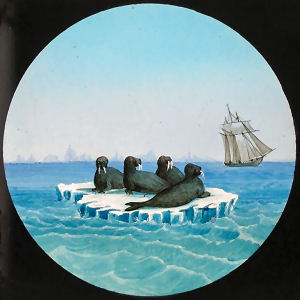 | ||
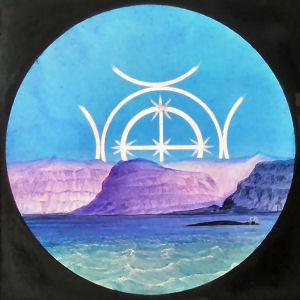 |
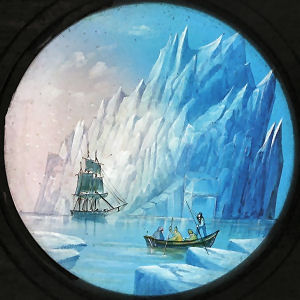 |
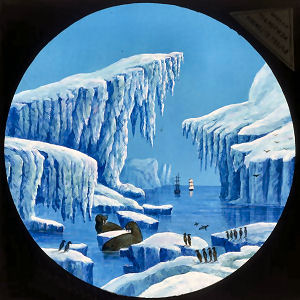 |
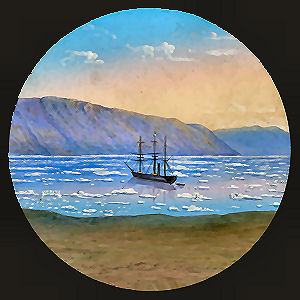 |
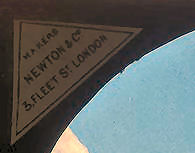 |
|
| Seven slides from a much larger set that depicts the famous British Arctic Expedition of 1875-1876 and are undoubtedly made by Newton because the label at a corner of the slides shows the name of the maker: Newton & Co. 3 Fleet Street London. | ||
 |
||
| View of the North Pole, showing Eskimos, ice-bear and moose. Nr 49 of a set made by an unknown manufacturer. | ||
More Arctic slides...... |
||
| |
©1997-2024 'de Luikerwaal' All rights reserved. Last update: 13-10-2024. |
|